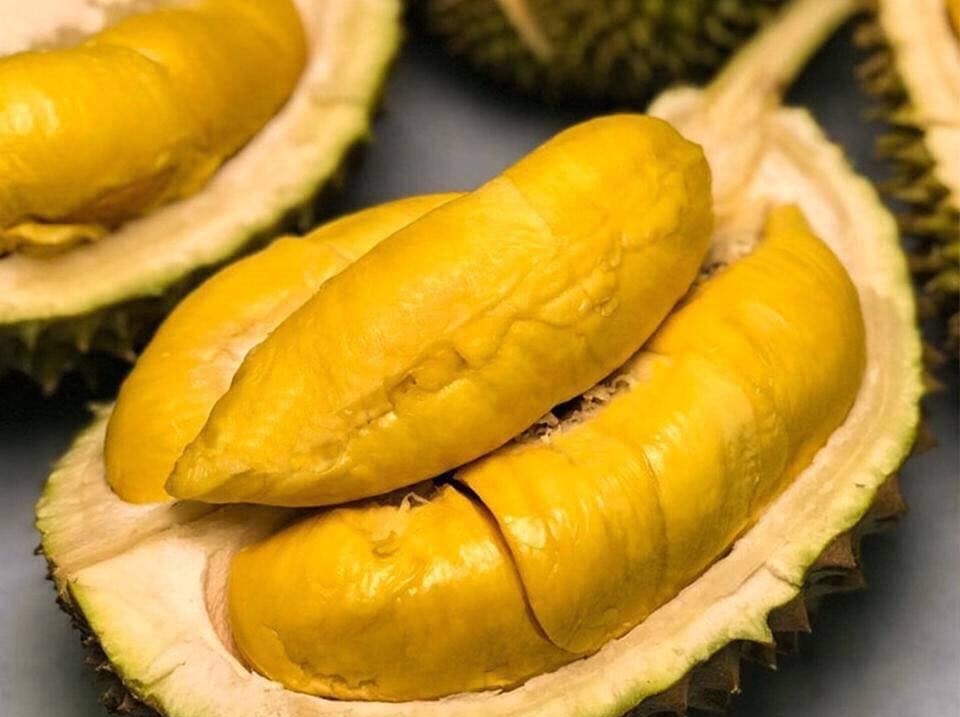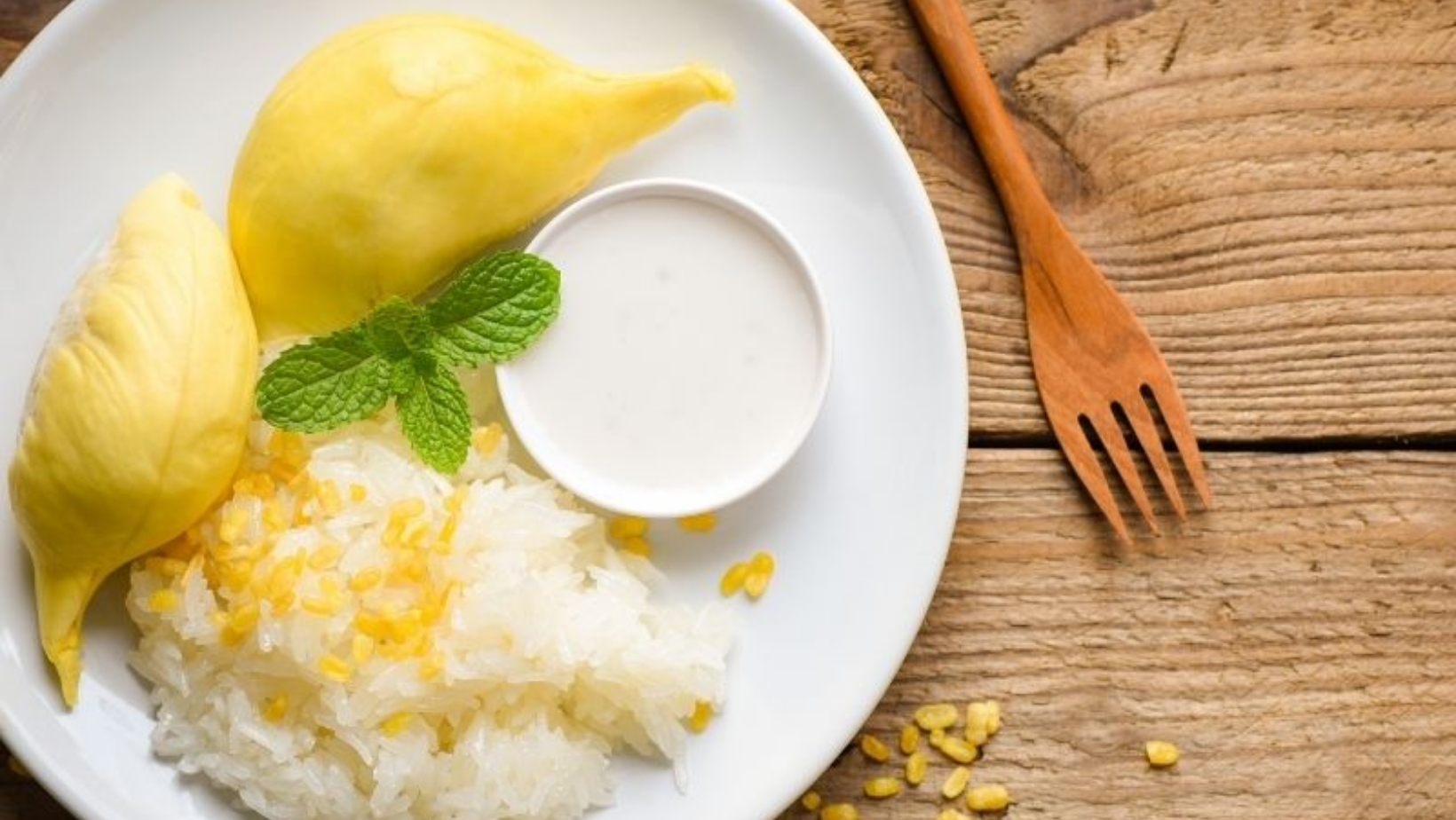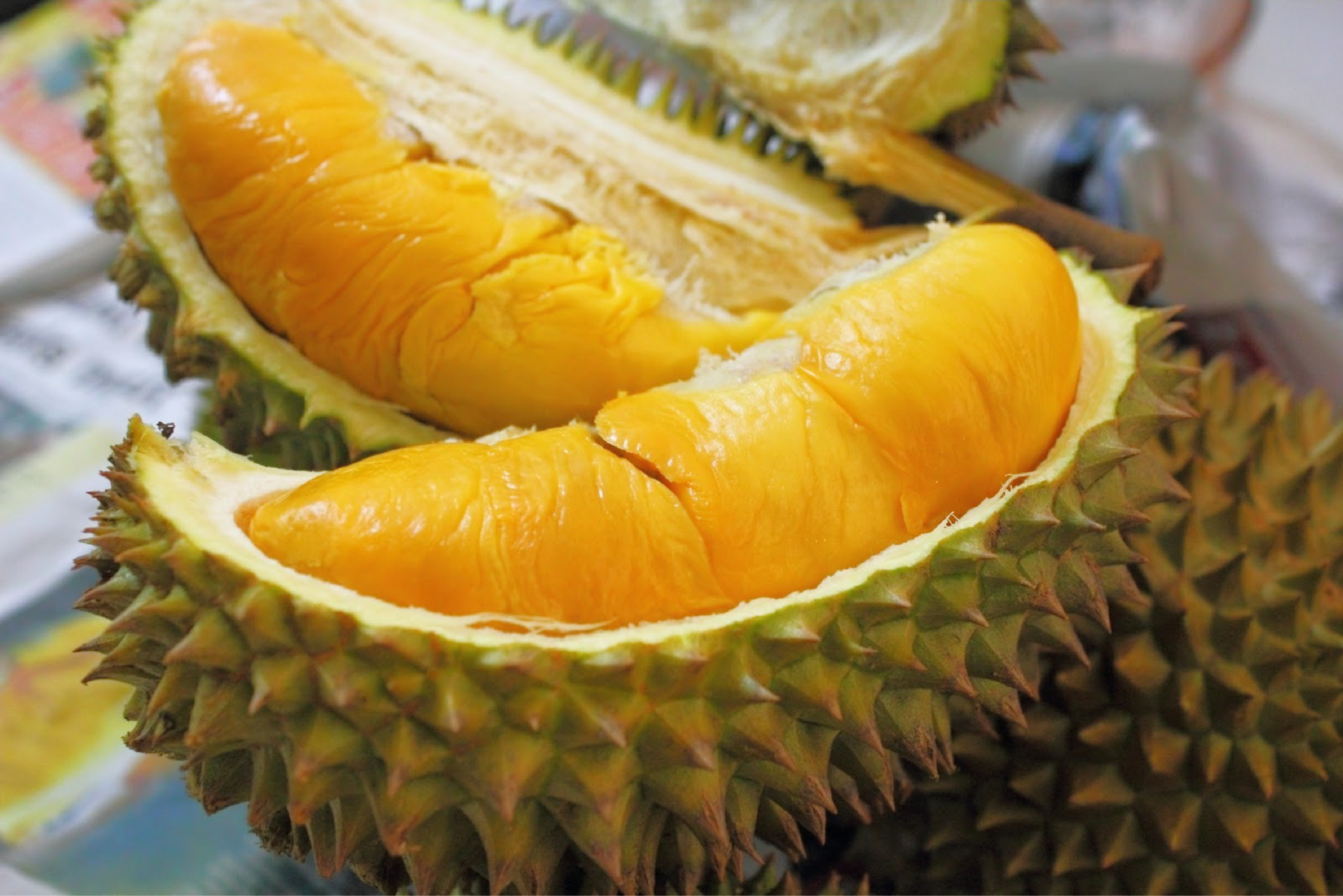Vietnamese durian is a tropical delight offering a unique and unforgettable taste experience. This is a must-try Vietnamese fruit and is also perfect for bringing home as a distinctive souvenir.
Beyond its vibrant culture and picturesque landscapes, Vietnam is also renowned for its delectable array of exotic fruits. Among these, Vietnamese durian stands out as a tantalizing delight with a unique taste. In this article, we provide essential information about this famous fruit in Vietnam and suggest some delightful Vietnamese durian recipes for home preparation and the finest cake brands to consider for food souvenirs during your Vietnam travel.
1. An overview of Vietnamese durian
1.1. Origin and features of Vietnamese durian

Initially discovered in the wilds of Sumatra and Kalimantan in Malaysia, durian has become a beloved fruit cultivated in various countries, including Indonesia, Malaysia, the Philippines, Thailand, Laos, Cambodia, and Vietnam. The Vietnamese durian, an exotic member of the Asian fruits family, was first planted in Bien Hoa over a century ago. Over time, this famous fruit in Vietnam has become one of the major contributors to the fruit market, with Vietnamese durian seasons varying across the country.
- March to May: Southwestern region
- April to July: The Southeastern provinces, including Dong Nai, Binh Phuoc, and Tay Ninh
- July to November: the Central Highlands provinces, such as Dak Nong, Dak Lak, Gia Lai, and Lam Dong.
- November to February: the Southwestern region
The Vietnamese durian tree, reaching heights of up to 40 meters, produces large, spiky fruits weighing up to 5 kilograms, known for their creamy, golden-yellow flesh and distinctive flavor. While some enthusiasts find the durian’s aroma irresistibly fragrant, others think its smell is unpleasant. Despite that, those who venture to taste it often eventually fall in love with this unique flavor.
1.2. Types of durian in Vietnam and price

Wondering what is the best variety of durian? Consider the following Vietnamese durian varieties to find out which type suits your preference the most:
- Ri6 durian (110,000–115,000/kilogram): Cultivated in Vinh Long, Cai Mon, and Ben Tre, this one is widely known and easily found in markets. It is cherished for its distinctive aroma, thick flesh, small seeds, and perfect balance of sweetness and richness.
- Chuong Bo durian (80,000–100,000 VND): Renowned in the Southwestern region, this type is smaller in size with a slightly bulbous shape, greenish skin, and large spikes. The soft, sweet, and creamy flesh differentiates it from other common durian types.
- Musang King durian (1 million VND–1.6 million VND/kilogram): Known for its premium taste, Musang King is considered the “king” of durians. It is large and spiky, with a bitter-sweet, creamy, and distinctive flavor.
- Red durian (200,000–300,000 VND/kilogram): Originating from Malaysia, red durian surprises with its red flesh, unlike the traditional yellow. It has a unique taste, resembling dark chocolate mixed with a rich, slightly bitter flavor.
1.3. Health benefits of Vietnamese durian

Vietnamese durian not only delights the taste buds but also offers a myriad of health benefits:
- Digestive support: Rich in dietary fiber, durian aids in alleviating constipation, bloating, acidity, and indigestion.
- Cardiovascular health: The fiber content promotes heart health, reducing the risk of atherosclerosis, heart attacks, and strokes.
- Blood pressure regulation: The high potassium content in durian helps balance salt levels, relax blood vessels, and lower the risk of heart disease.
- Anti-aging properties: Durian’s antioxidant properties, derived from vitamins and organic compounds, help eliminate harmful free radicals, reducing the risk of premature aging.
- Insomnia treatment: Durian contains tryptophan, an essential amino acid in sleep regulation. When converted to serotonin in the brain, it induces feelings of relaxation and happiness.
- Anemia treatment: Durian provides iron and copper, essential components for red blood cells, alleviating anemia symptoms such as indigestion, headaches, fatigue, and anxiety.
Despite being a delicious and nutritious fruit, durian should be consumed in moderation to prevent overheating and potential skin issues.
2. Culinary uses of Vietnamese durian
While indulging in the delightful experience of savoring each succulent durian flesh is a joy on its own, Vietnamese durian extends its culinary versatility beyond the mere act of peeling and enjoying. Here are some of the best Vietnamese durian recipes for those seeking a unique food souvenir or eager to create these delectable dishes in the comfort of their homes.
2.1. Vietnamese durian pia cake

Pia cake, also known as Vietnamese durian cake, is a specialty of the Vung Thom region in Soc Trang province. Its name is derived from the multiple thin layers forming the outer shell, which provides a delightful, light, and crispy texture when bitten into. These round, flat cakes boast a distinctive combination of flavors, with a filling comprising salted duck egg yolk, green beans, and durian. Some variations also include sweet potatoes or other fruit preserves.
Here are some of the most renowned Vietnamese durian cake brands:
- Tan Hue Vien: This brand’s cake is soft and flavorful thanks to its handmade traditional approach. Varieties include sweet potato-filled, jackfruit-filled, and lotus seed-filled.
- Cong Lap Thanh: Established over 60 years ago, it employs a special traditional recipe, producing pia cakes with a perfect blend of texture and flavor.
- Tan Hung: Originating from Vung Thom, Tan Hung’s pia cakes have evolved with variations like salted duck egg yolk and sweet potatoes to meet modern tastes.
- My Anh: Its modern production ensures soft, evenly layered cakes without harmful chemicals. Convenient packaging makes them perfect for sharing or gifting.
- Luong Tran: With over 40 years in Soc Trang, Luong Tran’s pia cakes are widely popular for their guaranteed quality and delightful taste.
- Bao Minh: Established in 1985, Bao Minh prioritizes the finest ingredients and innovative flavors, making their pia cakes a sought-after choice nationwide.
2.2. Vietnamese durian mooncake

Beside the traditional Vietnamese mooncakes, durian mooncakes are one of Vietnam’s most consumed delicacies, thanks to the rich and distinctive flavor of durian that resonates with the essence of Vietnam. Visitors can consider the following brands of durian mooncakes in Vietnam:
- Kinh Do: This brand is iconic in Vietnam, celebrated not only for its quality but also for its nostalgic connection to childhood. The durian-filled variant is a recent addition, blending traditional mooncake flavors with the exotic twist of durian for a perfect choice this Mid-Autumn season.
- Musang King: Hailing from Malaysia, it is renowned as the world’s finest durian mooncake brand. The Musang durian filling and the soft, glutinous rice dough create a heavenly combination of rich and sweet flavors.
- Givral: Inspired by French culinary culture, Givral mooncakes feature a unique fusion of traditional green bean and durian flavors. Skillfully incorporating salted eggs into the filling ensures a well-balanced taste for the entire mooncake.
- Nhu Lan: Established in 1968, Nhu Lan maintains its traditional essence in the durian mooncakes. Thin crusts, velvety fillings with a natural durian aroma, and the addition of salted eggs make these mooncakes a delightful choice.
2.3. Vietnamese durian sticky rice

In Vietnam, Vietnamese sticky rice is a culinary delight that seamlessly blends the creamy richness of durian with the comforting sweetness of sticky rice. Moreover, it is not just a Vietnamese food but also a treat for special celebrations such as family gatherings or festive occasions.
Ingredients:
- 200g glutinous rice
- 100g peeled split mung beans
- 100g durian flesh
- 50ml coconut milk
- 50g sugar
- 1/2 teaspoon salt
- 1 tablespoon condensed milk
- 30g white sesame seeds
Instructions:
- Soak glutinous rice for 6–8 hours and mung beans for 4–6 hours.
- Blend durian with condensed milk, sugar, and coconut milk.
- Toast sesame seeds until golden brown.
- Steam mung beans for 15 minutes, mix with glutinous rice and salt, and steam for an additional 20 minutes.
- Add the durian blend, and steam for 5 more minutes.
2.4. Vietnamese durian ice cream

If you are a sweetaholic, you may want to experience the distinctive taste of Vietnamese ice cream with the unique flavor of durian. This homemade treat is perfect for cooling down on a hot day or satisfying your sweet cravings.
Ingredients:
- 3 pieces of durian flesh
- 180ml sweetened condensed milk
Instructions:
- Extract durian flesh and blend it with sweetened condensed milk for 30 seconds until smooth.
- Pour the blend into ice cream molds, attach sticks, and freeze for about 4 hours.
2.5. Vietnamese durian crepe cake

If you’re a fan of Vietnamese cakes and Vietnamese desserts, the Vietnamese durian crepe cake is a must-try delicacy that perfectly blends the richness of durian with the artistry of crepe layering.
Ingredients:
- 100g all-purpose flour
- 100g durian flesh
- 2 eggs
- 200ml unsweetened fresh milk
- 100ml coconut milk
- 200ml whipping cream
- 3 tablespoons sugar
Instructions:
- Combine flour, eggs, fresh milk, and coconut milk. Mix and refrigerate for 30 minutes.
- Heat a non-stick pan, pour the batter for thin crepes, and cook for 2-3 minutes each.
- Whip cream with sugar until fluffy.
- Spread cream on each crepe, stack them, and add durian layers.
- Refrigerate the assembled cake for 30 minutes.
3. Tips for choosing good Vietnamese durian

- Press the stem to check if it is still fresh and moist.
- Opt for durians with large, firm, and evenly distributed thorns. Avoid durians with sharp, small, and crowded thorns that feel hard to the touch, as they may not be ripe.
- Choose durians that are round, evenly shaped, and without deformities. Avoid durians with irregular shapes or depressions, as they may have fewer and less developed segments.
- Natural ripened durians have a slightly golden green hue, while those artificially ripened may have a darker yellow color due to chemicals.
- Light cracks on the durian skin are acceptable, but avoid those with large cracks or openings, as they may be overripe or have an unpleasant odor.

